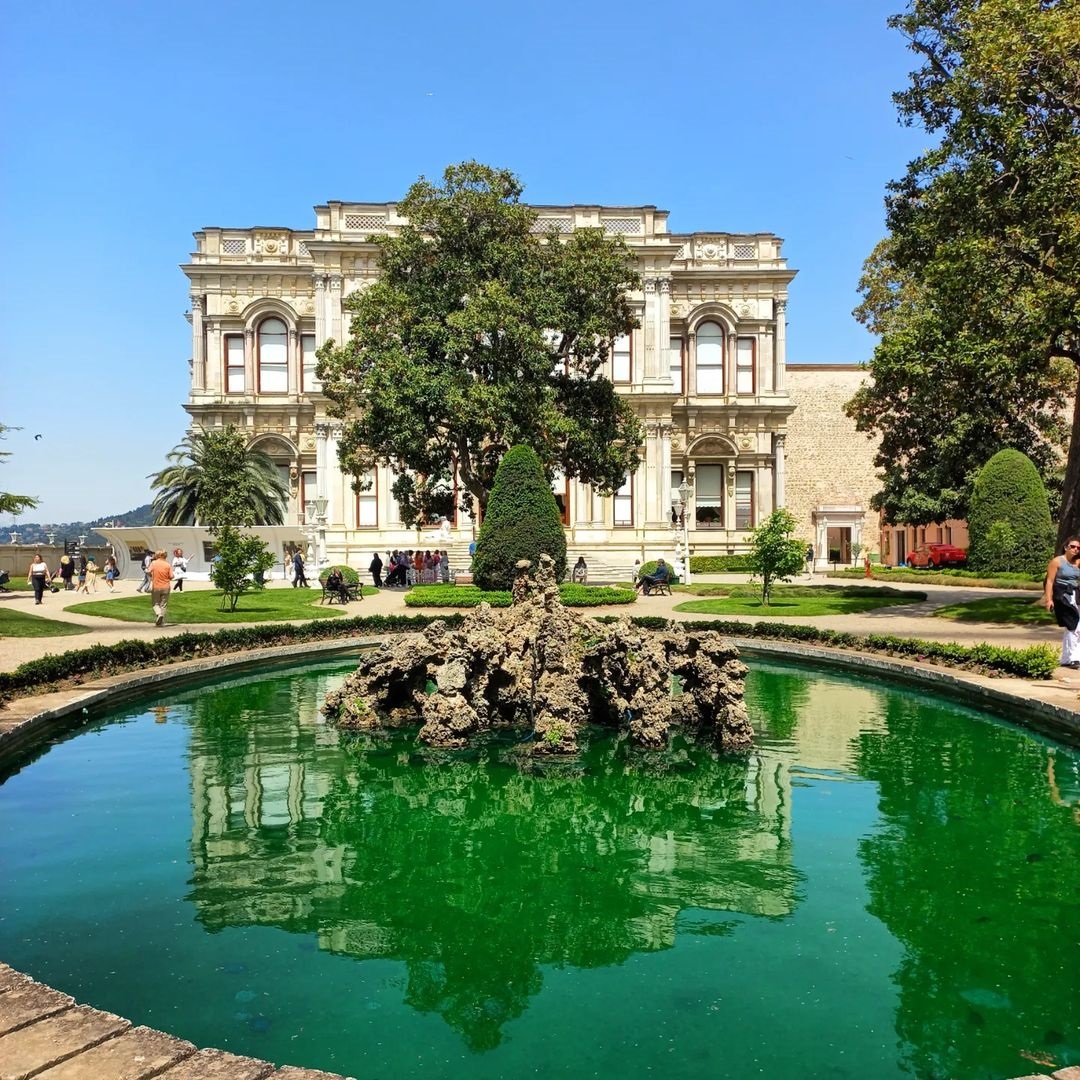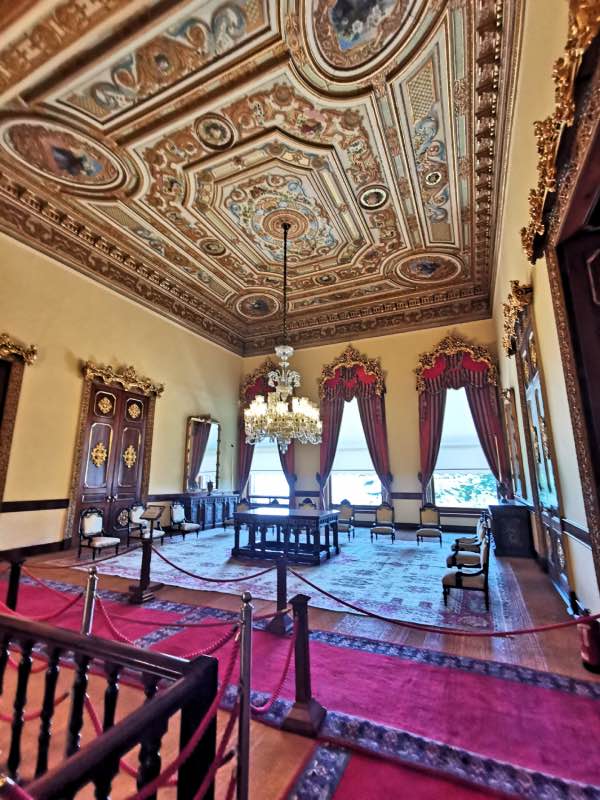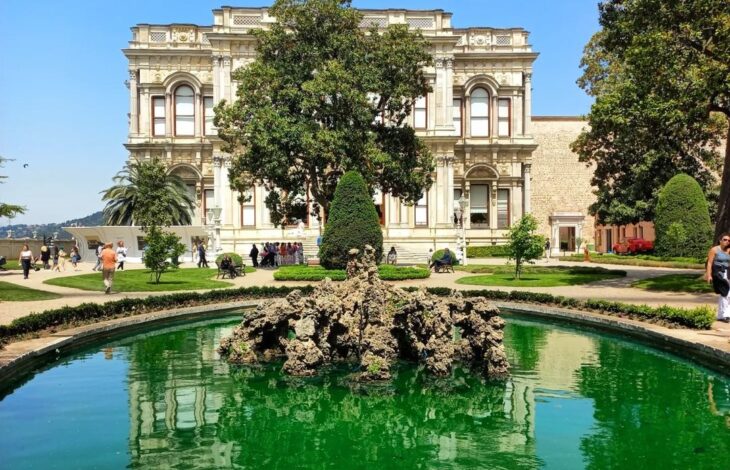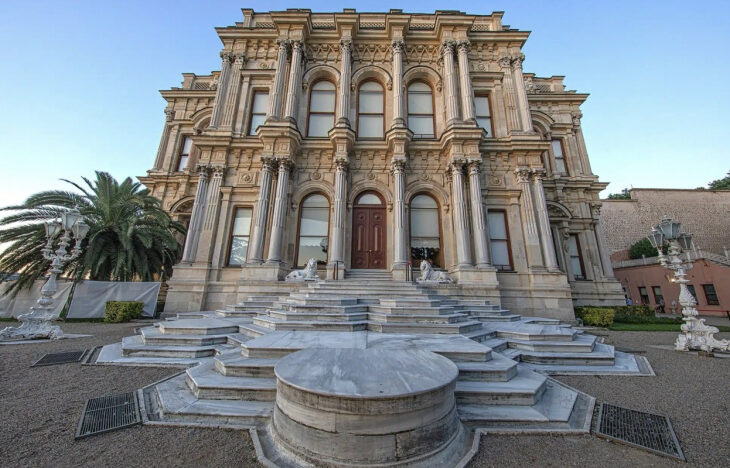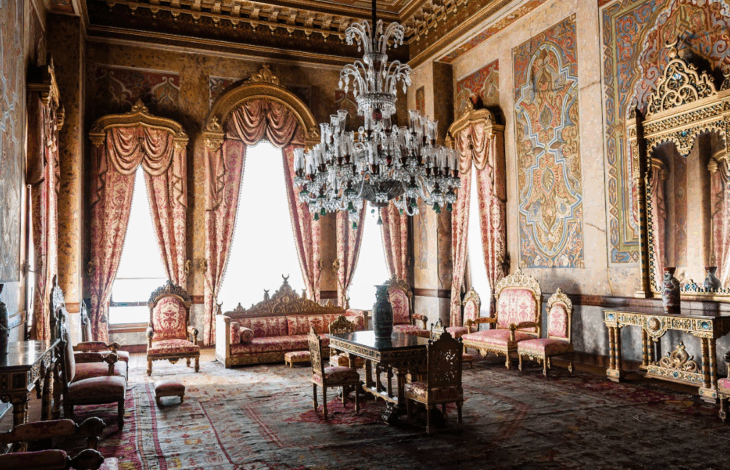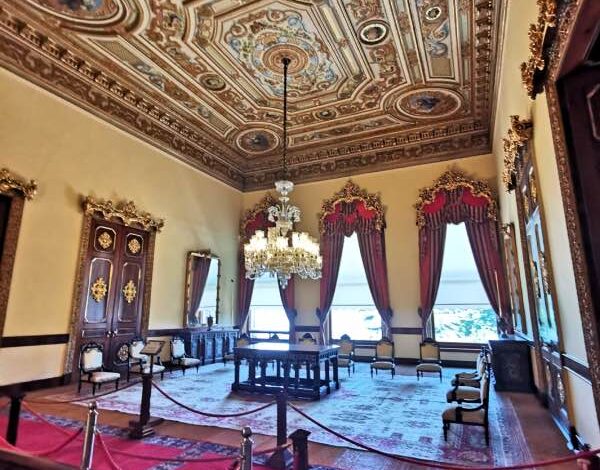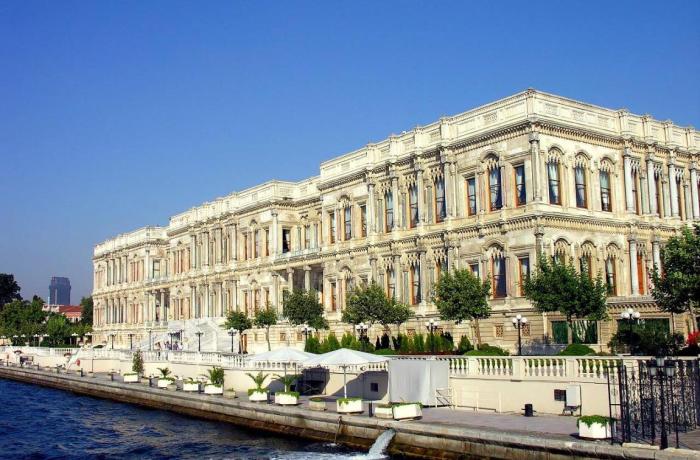
Beylerbeyi Palace
The Beylerbeyi district and its surroundings have served as a residential area dating back to the Byzantine period. Following the destruction of the wooden palace commissioned by Sultan Mahmud II (r. 1808–1839), Sultan Abdülaziz had the present-day Beylerbeyi Palace and its annexes constructed between 1863 and 1865. The main palace building, consisting of the Mabeyn (State Apartments) and Harem sections, is open to visitors. However, the Seaside Pavilions, Upper Garden Terraces with the grand pool, the Yellow Pavilion, the Marble Pavilion, and the Imperial Stables remain closed to the public.
Beylerbeyi Palace was built as a summer residence and was primarily used to host distinguished foreign guests. Among the notable visitors were Emperor Franz Joseph of Austria-Hungary (1869), Empress Eugénie of France (1869), Prince Nikola of Montenegro (1874), and German Emperor Wilhelm II. Sultan Abdülhamid II also spent the last six years of his life here after his deposition and passed away in the palace in 1918.
Reflecting a blend of Western architectural styles with Eastern aesthetics, the palace interior bears a resemblance to the traditional layout of a Turkish house. Constructed as a three-storey structure including the basement, the palace comprises 24 rooms and 6 halls. The floors are covered with reed mats imported from Egypt. The interiors are adorned with handwoven Hereke carpets, Baccarat crystal chandeliers from France, clocks manufactured in England, France, and at the Istanbul-Haliç Shipyard, as well as vases from China, Japan, France, Germany, and Turkey (notably from the Yıldız Porcelain Factory).
Annexes and Gardens of Beylerbeyi Palace
Marble Pavilion (Mermer Köşk):
Commissioned by Sultan Mahmud II between 1829 and 1832 as a hunting lodge, the Marble Pavilion takes its name from its marble-clad exterior walls. The structure features an interior fountain and a decorative water basin.
Yellow Pavilion (Sarı Köşk):
Situated near the Marble Pavilion, the Yellow Pavilion faces a forested area on one side and opens outward on the other. Built on a basement with two main floors, this pavilion stands out with its distinctive ceiling decorations and interior design, offering a fine example of its era’s architectural aesthetics.
Imperial Stables (Ahır Köşkü):
Located beyond the Marble Pavilion on the uppermost terrace of the palace gardens, the Imperial Stables reflect the importance of equestrian culture in the Ottoman Empire. Animal figures, particularly horses, are painted on the ceilings of the entrance area. The stable itself consists of 20 compartments on either side, with horse head and eye motifs featured prominently in the chandeliers and other decorative elements.
Palace Gardens:
Covering approximately 70,000 square meters today, the terraced gardens of Beylerbeyi Palace, once a symbol of prestige in the 19th century, are interconnected through stairways and ramps. The magnolia and chestnut trees in the Imperial Garden and the linden trees in the Harem Garden, along with the iconic Bosphorus Judas trees lining the terraces, are believed to have been planted during the reign of Sultan Abdülhamid II.
Seaside Pavilions:
These twin structures, one located in the Mabeyn section and the other in the Harem (designated for the Valide Sultan), resemble garden kiosks and were referred to in historical records with names such as “tent pavilions” and “nevresm pavilions,” pointing to the originality of their design. The octagonal roofs of the pavilions are decorated with paintings of various animals.
Main Features
Location Map
Contact Information
Beylerbeyi Mah. Abdullah Ağa Cad. No:12, Beylerbeyi/Üsküdar0 (216) 321 93 20info@millisaraylar.gov.trhttps://www.millisaraylar.gov.tr/Lokasyon/4/beylerbeyi-sarayi
Today’s Business Hours
Now: open 09:00-17:00- Show All Week’s Timing
- MondayClose
- Tuesday09:00-17:00
- Wednesday09:00-17:00
- Thursday09:00-17:00
- Friday09:00-17:00
- Saturday09:00-17:00
- Sunday09:00-17:00


